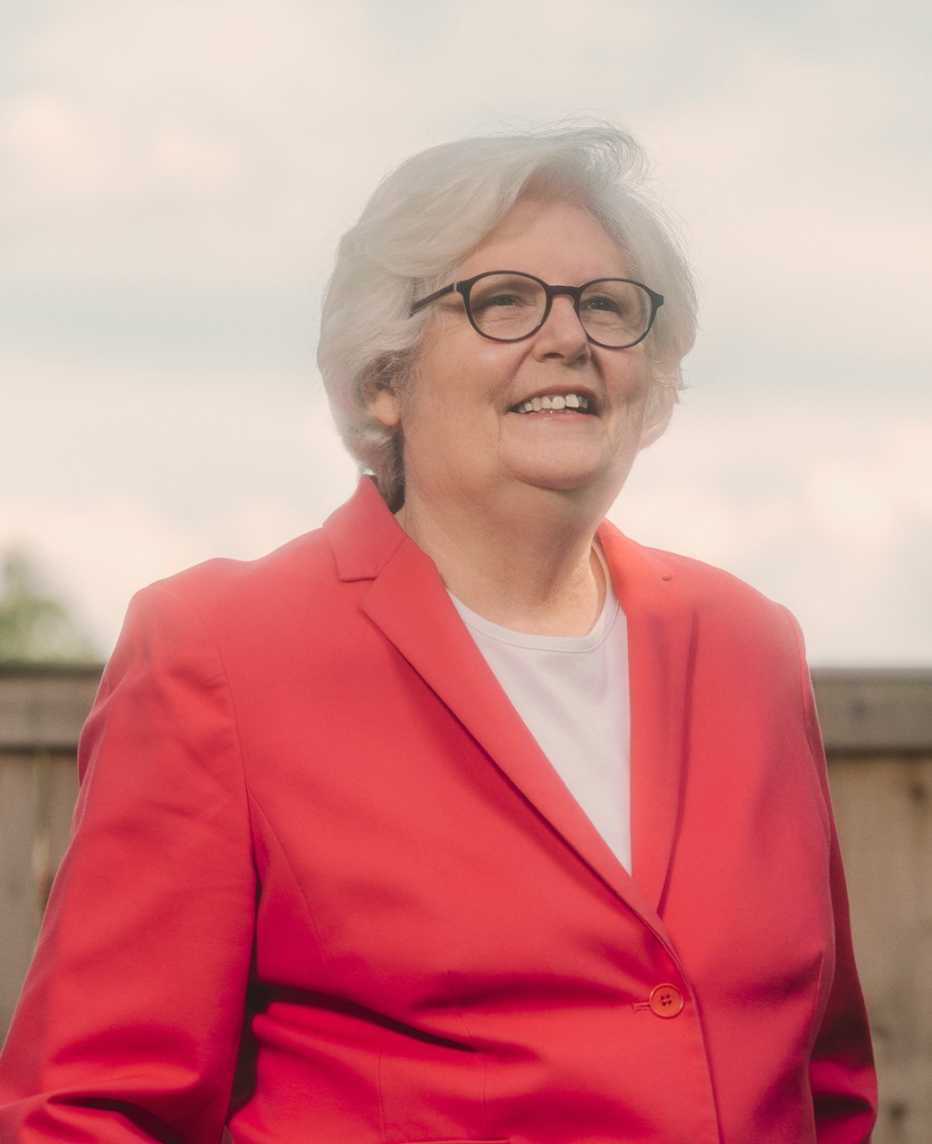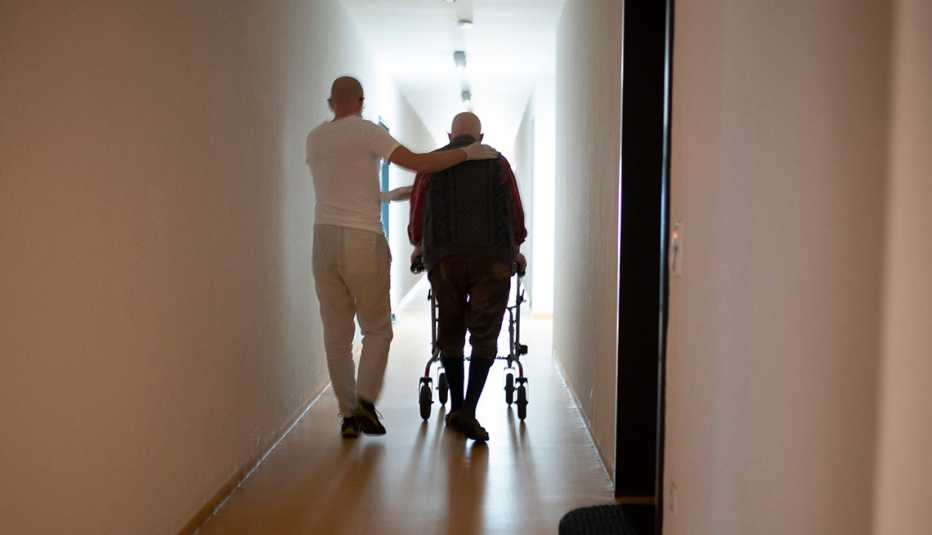Despite these positive ripples, the real job of reforming long-term care remains before us.
The national debate should aim for a holistic system where supports and services are integrated with affordable medical treatment. Services should be delivered in settings that enable adults of all backgrounds to live the best lives possible. Those able to remain in their own homes should have that option and the support needed to do so. Residents of nursing homes should be assured of safety, personal dignity and quality care.
In the coming weeks and months, I will continue to highlight the urgent need for a national effort to improve care, aimed at focusing public attention on the following priorities:
How to achieve lasting long-term care reform
- Enhanced coverage of home and community-based services (HCBS)
Home is where the heart is, not a rehabilitation facility. An AARP national survey found that more than three-quarters of adults age 50-plus prefer to stay in their homes and communities for as long as possible. However, many people do not understand the challenges they may face in achieving this dream. Costs may include payment to hire aides, as well as significant expenses borne by family caregivers. On average, for the same cost as one person residing in a nursing home, Medicaid can pay for three people receiving HCBS. That gives HCBS the potential to play a much larger role in helping people remain independent, even those with serious health conditions.
The good news is that investment, innovation and adaptation are already at play. States are seeking Medicaid waivers and other options to finance more care in the home. States are also receiving additional temporary enhanced funding for Medicaid HCBS. And forward-thinking medical practices are offering house calls in some locations. This looks like a vast, untapped market, with just 28 percent of older adults having researched community-based services for themselves.
- Accessible and affordable care options in urban and rural areas, to fight entrenched health disparities
Everyone should have access to quality care, regardless of income, and the options should be adequately financed. Yet, the pandemic has shown that inequities are pervasive, with the virus wreaking the greatest harm on communities of color. Initial data from nursing homes, for example, shows that COVID-19 death rates have been higher in institutions with larger proportions of African American and Hispanic residents.
Technology and telehealth can help solve part of this problem by conveniently and safely delivering care where the person lives or in their community. To fulfill technology's promise, though, we must ensure it is accessible to everyone and that we have the broadband infrastructure to connect everyone. There is still a long way to go.
After available family and friends have done all they can to provide care, individuals may turn to their savings, tax credits or deductions, where applicable. Costs can be overwhelming, and people need options — a private room in a nursing home can exceed $100,000 a year. Both the public and private sectors can do more. A reinvigorated long-term care insurance market, with strong consumer protections and affordable coverage, can be part of the solution.
- A larger cadre of quality, professional workers for our homes and care facilities
A shortage of skilled long-term care workers makes life difficult for individuals and families searching for quality care. To overcome this shortage, we must provide adequate pay and benefits, safe working conditions and career structures that enable advancement.
According to a recent study from the Brookings Institution, health care support, direct care and service workers — mostly women — are paid an average of $13.48 an hour, just above minimum wage in some states. Their work can be extremely demanding. It directly affects individuals’ quality of life, for better or worse. We need more trained, quality workers that families can rely on. Looking beyond the pandemic, this need will only increase.
- Support for family caregivers
Helpful family members, friends and neighbors are the backbones of long-term care in America, and they should have greater assistance. AARP and the National Alliance for Caregiving's Caregiving in the U.S. 2020 report reveals that 48 million Americans provide care for adults — and that figure was compiled before the pandemic. These diverse family caregivers cross multiple generations and every demographic. While their efforts may yield a sense of purpose and accomplishment, the dedication can come with a personal cost in the form of stress, financial sacrifice and even sickness.
One in 4 family caregivers reports physical decline from caregiving, and 1 in 3 reports extreme mental stress. Family caregivers who try to balance their duties with paying jobs run into schedule conflicts that over time can undermine their careers and financial security. Their medical and other care responsibilities are increasing, meanwhile, as more individuals get serious health care treatments at home, including dialysis and chemotherapy. In addition, family caregivers spend, on average, nearly $7,000 in out-of-pocket costs annually, or nearly 20 percent of their income.
For all these reasons, we support the bipartisan Credit for Caring Act, reintroduced last week by Senators Ernst (R-IA), Bennet (D-CO), Capito (R-WV), Warren (D-MA), and Rep. Sánchez (D-CA), which would create a family caregiver tax credit to provide some financial relief. Services that can lighten caregivers’ load, including respite care that gives them a needed break, should also be more available.
- Better options for congregate living
People need more choices that optimize safety and quality of life — whether they live in nursing homes, assisted living, other residential care settings, multigenerational housing or innovative new models. Homelike, smaller settings, such as Green Houses, may be part of the answer.
Whatever the choice, adequate staffing must be in place to ensure quality care and personal safety. Access to social connections helps make life worth living. As the pandemic continues to remind us, people need ways to combat isolation, such as technologies to keep in touch with family and friends.
No one said this would be easy. Despite all the anguish and heartbreak, policymakers still turn their heads from the nursing home problem. Even modest remedies may come with a stiff price tag. Issues of quality, funding, regulation, accountability, workforce pay and training and transparency all belong on the table.
But we have to start somewhere. (Note to all you pundits and conference planners out there: This area cries out for fresh ideas.)
The first challenge is to improve the quality of care and quality of life in nursing homes. The restoration of public trust will follow when facilities do a good job consistently. They must apply lessons from the pandemic to ensure greater health, safety and resident well-being in the future. Providing folks with more options, including HCBS, helps minimize the number of people needing to enter nursing homes. More basically, we need a national commitment to re-envision how an advanced society should provide care in the 21st century. All stakeholders have a role to play: business, labor, consumers, advocates, government, nursing homes, hospitals, assisted living and home and community-based service providers, to name a few.
Yes, it's hard to get things done in Washington these days, even little things. Fixing long-term care won't be easy.
But let's not forget that as a nation, we've done big things before. Once upon a time, older adults without money lived out their final days in a miserable county poorhouse. People said there was nothing to be done. Then America created Social Security, providing an entirely new foundation of financial well-being. Before the 1960s, the idea that government should offer health insurance to low-income or older individuals was a bridge too far in Washington. Then we launched Medicaid and Medicare, helping millions and altering that view forever. Why not aim big on long-term care? After a lifetime of paying taxes and contributing to society, older adults deserve as much independence, security and dignity as possible. Quality care should be within reach of any person who needs it, whatever their age. The goal should be to use the momentum spurred by COVID-19 to create a humane, sustainable system of care that works for everyone. We can begin by recognizing this long-neglected problem and offering serious ideas to address it. It's long past time to engage in this national debate.
Let's get started.
Nancy LeaMond is AARP's chief advocacy and engagement officer.








































































